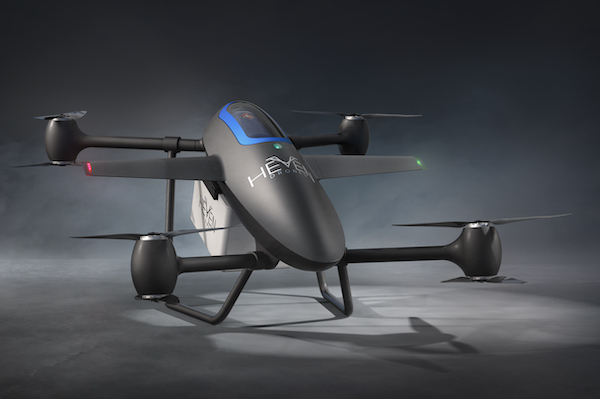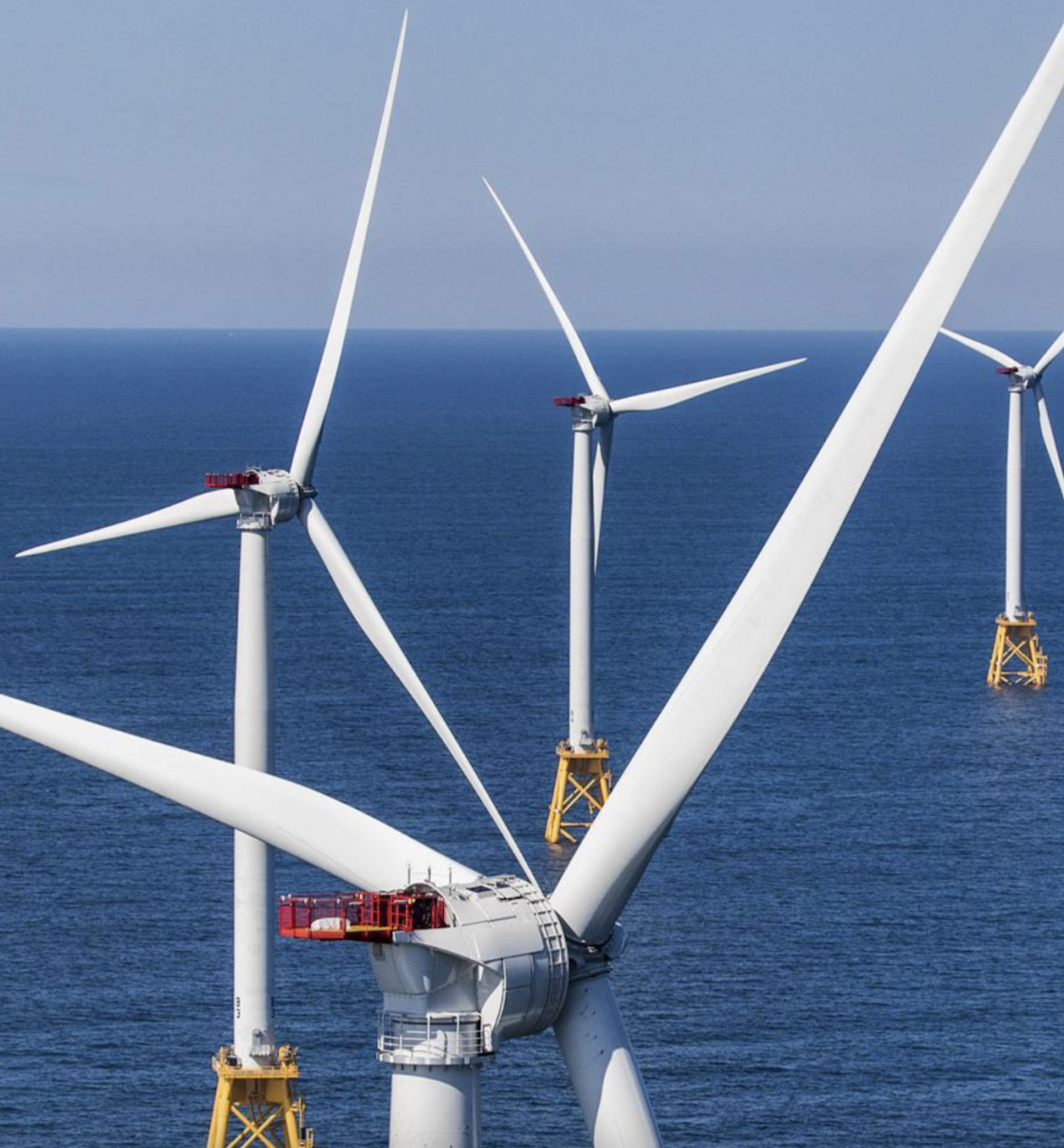A Powerful Pair: How hydrogen-fueled drones can support offshore wind
Drones are becoming more popular than ever for examining infrastructure of all kinds, and can be extremely useful in monitoring hard-to-reach infrastructure. Remote controlled or autonomous drones equipped with cameras and sensors can help alert utilities of potential problems like damaged components or parts that have stopped functioning. It's a lot cheaper, faster, and safer than having workers conduct inspections.
But offshore wind farms, some of the world’s hardest-to-reach energy infrastructure, have been slower to adopt drones. With nothing to block breezes, offshore wind turbines can be an especially productive source of renewable energy. Unfortunately, their remote location means that getting to them to prevent problems can be a challenge, even for drones.

Inspection drones for this offshore infrastructure need to be especially powerful, as they often need to fly significant distances and battle high winds. Given that most standard commercial drones can fly for no more than 45 minutes to an hour, farm operators would need a fleet of drones in order to undertake a serious inspection. Almost as soon as they send a drone out, it would need to navigate its way back to base to be replaced by another drone—making such inspections quite inefficient.
One emerging solution for keeping drones aloft long enough to inspect what are often hundreds of turbines in a farm is hydrogen power. Drones that use hydrogen instead of batteries can fly further, faster, and longer—as long as three or four hours. This extra flying time allows them to conduct in-depth, serious inspections without running out of power and without the need to call them back as quickly. They can also carry much heavier payloads if needed.
Hydrogen drones are a fitting solution for offshore wind farms because they, too, use clean energy. Without the need for batteries (which rely on minerals that are often in short supply, are attained through harsh mining processes, and pose a challenge when it comes to disposal), drones powered by hydrogen offer a more sustainable option for wind farm maintenance. Produced from water, hydrogen emits no carbon when used as energy, making its greenhouse gas emissions near zero. Hydrogen use can also be less expensive than batteries when looking at life cycle economics; batteries have limited life and may require replacement. Boosted by new production and distribution initiatives backed by the Department of Energy and other policymakers, hydrogen is set to grow as a power source, opening the way for wider use, including integrating it into the operations and maintenance of offshore infrastructure.
 A complex task
A complex task
To keep wind farms operating efficiently, inspectors—human or drone—need to examine elements like towers, which can crack or corrode; blades, which can sustain damage from salt water or lightning; hubs, which can sustain loose connections due to the wear and tear; and the generator housing (nacelle assemblies) which can short out. Ironically, all these components are also subject to wind damage, particularly during heavy gusts. Inspections are usually conducted several times a year but could be more frequent if equipment is subjected to extreme weather. Manual inspections usually require between three to six hours per turbine, making such inspections very expensive.
And then there's the safety factor. Inspectors need to climb high on scaffolding in order to reach a turbine's main components, where they face risks like falling, injury from moving parts, and even burns and electrocution. In addition, offshore wind farms tend to be far from shore, making long-distance drone inspection impractical, if not impossible.
It's for these reasons that many operators use battery-powered drones only as a second-tier inspection tool, relying more on the traditional, in-person methods of inspecting wind farms—a process that requires a lot more money, time, and effort than drone inspections.
Benefits of hydrogen-powered drones
Hydrogen-based drones can improve things considerably. If a long-flying hydrogen-powered inspection drone finds a problem on a turbine, it can use sensors and cameras to transmit the location back to operators, who can then dispatch another drone with the necessary parts that can be installed by staff who will know exactly where to go and what to do to fix the problem. And, by scoping out specific safety and weather conditions on site, drones can help a repair crew prepare for any possible risks before heading out.
A good analogy is to think of a drone as a low-cost, autonomous helicopter. It can accomplish a mission at a fraction of the cost and time it would take to send a crew to do the same task. While hydrogen-based drones already have a robust fly-time, the technology exists to enable them to fly for even longer. If a drone is equipped with a portable electrolyzer that uses electricity to generate hydrogen from moisture in the air, it could theoretically stay aloft indefinitely. This will likely become more common in the near future, providing yet another advantage to hydrogen-powered drones.
Drones have proven their worth as inspection and monitoring tools in a wide variety of areas—but they are perhaps more important for offshore wind farm inspections than for any other industry. The distance, complicated setup, expense, sheer number of assets, and danger involved in inspecting offshore wind farms makes drones the only practical, safe, and economically viable inspection solution. We are starting to see more use and pilot projects involving battery-powered autonomous drones and offshore wind farms, often being launched from ships. With the adoption of hydrogen-powered drones, there will be even more options for inspections launched from shore, helping the production of offshore wind energy become even more efficient, green, and sustainable.
Bentzion Levinson is Founder and CEO of Heven Drones, which manufactures end-to-end actionable drones that provide the cutting-edge performance, customization, and stability needed to accomplish any mission
Heven Drones | www.hevendrones.com
Author: Bentzion Levinson
Volume: 2023 September/October










.jpg?r=8866)


.jpg?r=9237)